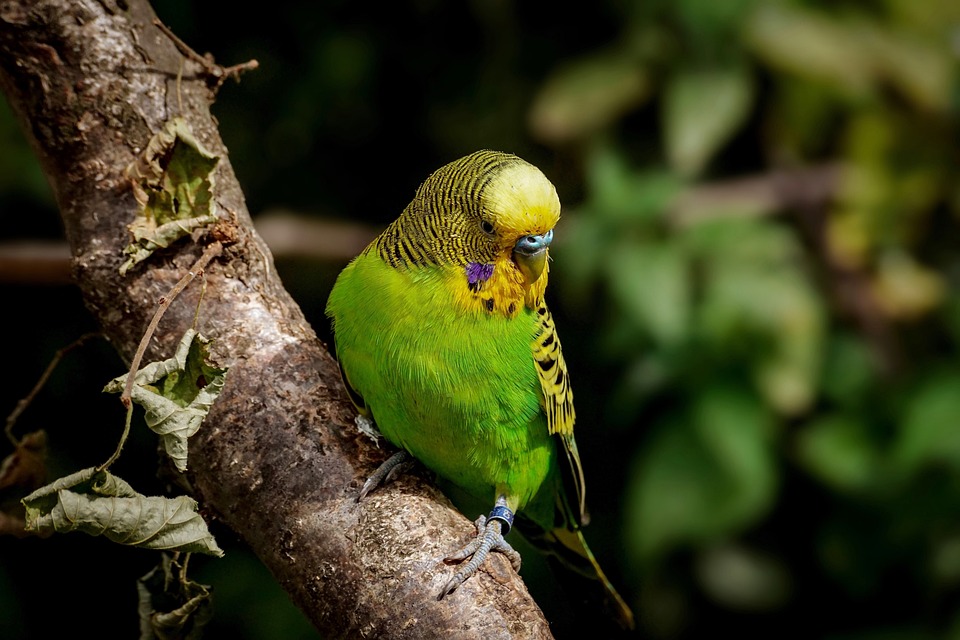Parrots are highly intelligent and social creatures that thrive on mental stimulation and physical activity. Playtime is an essential part of a parrot’s daily routine, as it helps them stay mentally engaged, maintain their physical health, and build a strong bond with their human companions. Understanding the signs of excitement in parrots during playtime is crucial for ensuring their well-being and happiness.
When a parrot is excited during playtime, they often express their enthusiasm through vocalizations. These sounds can vary from cheerful chirping and whistling to loud squawking and mimicking human speech. Pay attention to the pitch, volume, and frequency of their vocalizations, as they can indicate the level of excitement or pleasure the parrot is experiencing.
Another noticeable sign of excitement in parrots is wing flapping. During playtime, parrots may vigorously flap their wings, often accompanied by hopping or jumping around. This behavior mimics their natural flight movements and is a clear indicator of their excitement and happiness.
A parrot that is excited during playtime may fan out their tail feathers. Tail fanning is a behavioral display that signifies arousal and enthusiasm. However, it is important to note that tail fanning can also be a sign of aggression or fear, so it is essential to consider the overall body language of the parrot when interpreting this behavior.
Parrots are known for their meticulous preening behavior, and they often engage in it during playtime when they are excited. Preening involves the parrot using its beak to clean and groom its feathers. If your parrot is actively preening while playing, it indicates that they are comfortable, content, and enjoying the interactive session.
Head bobbing is a common behavior displayed by parrots during playtime when they are excited or anticipating something. This rhythmic movement involves the parrot repeatedly nodding its head up and down. Head bobbing can also be seen during courtship or as a sign of curiosity, so it’s essential to consider other signs of excitement to accurately interpret this behavior.
While excitement and aggression can sometimes share similar behavioral signs, there are key differences to look out for. Excitement is usually accompanied by vocalizations, wing flapping, tail fanning, and a generally playful demeanor. Aggression, on the other hand, involves aggressive body postures, lunging, biting, and hissing. If you are unsure, it’s always best to consult with an avian behavior specialist or veterinarian.
Excessive excitement during playtime is generally not a cause for concern unless it becomes destructive or leads to self-injury. Parrots are naturally energetic creatures, and playtime provides an outlet for their energy. However, if you notice any behavioral changes or signs of distress, it’s advisable to consult with an avian professional.
Parrots have diverse preferences when it comes to toys and activities. Experiment with various toys like puzzle feeders, foraging toys, and interactive toys that encourage problem-solving. Additionally, incorporating play sessions that mimic natural behaviors like flying, climbing, and exploring can greatly enhance their excitement during playtime.
Parrots can indeed become overstimulated during playtime, especially if they are exposed to continuous high levels of excitement without breaks. Overstimulation can lead to stress, anxiety, or even aggression. It is important to observe your parrot’s body language, set appropriate playtime durations, and provide them with quiet and restful periods between play sessions.
Recognizing signs of excitement in parrots during playtime is vital for understanding their needs and ensuring their overall well-being. By paying attention to vocalizations, wing flapping, tail fanning, preening, and head bobbing, you can develop a deeper understanding of your parrot’s emotions and adjust their playtime activities accordingly. Remember to strike a balance between mental stimulation, physical activity, and relaxation to provide a fulfilling playtime experience for your feathered friend.









